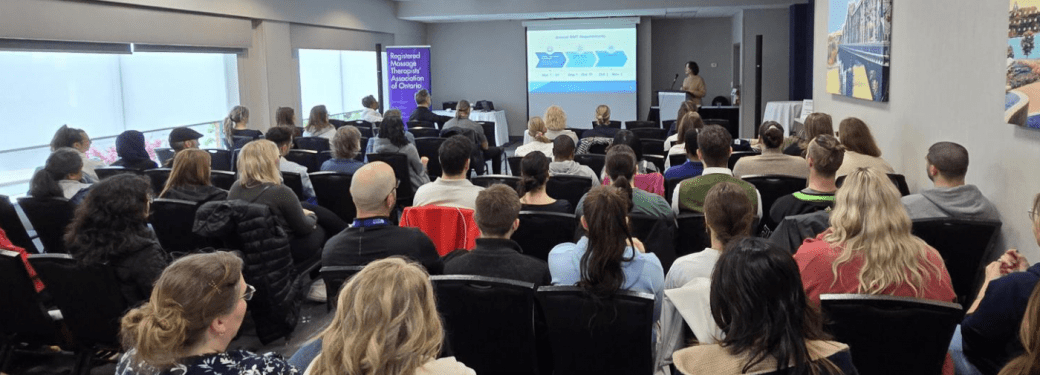
Highlights from the 2025 CMTO and RMTAO Town Halls
June 2025
In April and May, the College of Massage Therapists of Ontario (CMTO) and the Registered Massage Therapists’ Association of Ontario (RMTAO) hosted free, in-person Town Halls across Ontario. Maureen Boon, CMTO’s Registrar and CEO, presented CMTO’s work protecting the public interest in the Massage Therapy profession, and answered questions from attendees. If you didn’t get a chance to attend, here are the top highlights:
-
The difference between the College of Massage Therapists of Ontario (CMTO) and the Registered Massage Therapists’ Association of Ontario (RMTAO)
CMTO is the regulatory body that oversees Registered Massage Therapists (RMTs/MTs) working in the province. It is a requirement to register with us to practise as an RMT/MT in Ontario, whereas membership into the Registered Massage Therapists’ Association of Ontario (RMTAO) is optional.
CMTO receives its authority from the Regulated Health Professions Act, 1991 and the Massage Therapy Act, 1991 and exists to protect the public by:
- setting the requirements for becoming an RMT/MT;
- developing and enforcing rules and guidelines for RMTs’/MTs’ practice and conduct;
- running a Quality Assurance Program to ensure RMTs/MTs keep their knowledge and skills up to date;
- maintaining a public register of all RMTs/MTs in Ontario; and,
- receiving and investigating concerns and complaints about Massage Therapy care, taking disciplinary action when necessary.
-
There are over 16,000 RMTs/MTs practising in Ontario
In Ontario there are 16,186 RMTs/MTs practising Massage Therapy. This number continues to grow year-over-year. The top three places you can find RMTs/MTs are in clinics (50%), in solo practices (27%) and at spas (9%).
-
RMTs/MTs engage in continued learning through STRiVE – CMTO’s Quality Assurance program
Every year RMTs/MTs must complete CMTO’s Quality Assurance program called STRiVE. STRiVE is a professional development program for continued learning that ensures RMTs’/MTs’ skills and knowledge stay up to date. When you visit an RMT/MT, you are receiving care from a regulated healthcare professional who is committed to continued self-improvement to provide you with safe and effective care.
-
RMT/MT practice is based on a defined scope of practice defined by legislation


